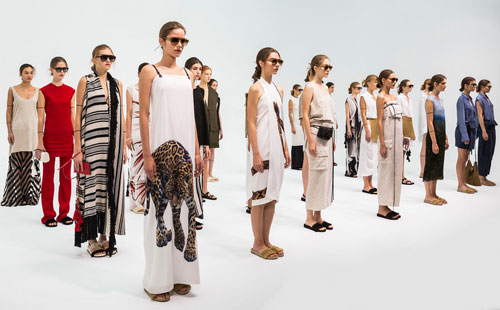F1 Malaysian Grand Prix
Sepang International Circuit, MalaysiaCharter a Private Jet to the F1 Malaysian Grand Prix
The Formula 1 Malaysian Grand Prix falls near the end of the annual championship series calendar but near the top in thrills.

We Can Get You There
If you want to be there to join the enthusiastic race fans who gather at the Sepang International Circuit, located a mere 180 miles north of the equator, Paramount Business Jets can arrange a charter flight for you into any nearby airport, including:
- Kuala Lumpur International Airport, WMKK, KUL, Kuala Lumpur, Malaysia (2 miles)
- Simpang Ab, WMKF, Kuala Lumpur, Malaysia (24 miles)
- Sultan Abdul Aziz Shah Airport, WMSA, SZB, Kuala Lumpur, Malaysia (29 miles)
- Malacca Airport, WMKM, MKZ, Malacca, Malaysia (50 miles)
- Pinang Kampai Airport, WIBD, DUM, Dumai, Indonesia (82 miles)
Get a Quick Quote Online and Book
Your Jet Early!
Booking early has many advantages. Enter a few details below to start planning your private jet flight to the F1 Malaysian Grand Prix.
About The Race
While the Malaysian Grand Prix has officially been on the Formula One World Championship schedule since 1999, Grand Prix races have been going on in the country – when Singapore was still part of the federation -- since 1962.
After Singapore broke away from Malaysia in 1965, races continued in Western Malaysia, until it became an official part of the championship calendar in 1999.

About The Circuit
The Malaysian Grand Prix is held on the Sepang Circuit, which is located about 40 miles south of Kuala Lumpur. The track has 15 sweeping turns and six straightaways that allow drivers to reach speeds over 124 mph.
It is different and more impressive than many of the other 20 circuits on the F1 Grand Prix championship series schedule.
Its design allows all 130,000 spectators see at least half the race. There is also an on-site shopping mall.
The same German architect, Herman Tilke, who designed the circuits in Bahrain and Turkey, designed Sepang.
It is a beautiful raceway. When it was built, 9,000 palm trees (including 4,000 coconut trees) were planted about the perimeter. Tilke tried to meld Malaysian culture with modern technology. The facilities are state of the art but the roof of the grandstand was made to look like a giant hibiscus, the national flower of Malaysia.
Along its unusual layout, drivers go in a clockwise direction, starting with a long straight and then onto two smaller tracks, called the north and south circuits.
Take a victory lap with Fernando Alonso to see what it looks like to drive the circuit.
About The Weather
It. Is. Hot.
Of course, it is. It’s located less than 200 miles north of the equator. But the weather has, time and time again, resulted in very exciting races. The circuit has been called the most challenging of all the Formula 1 Grand Prix circuits.
Drivers are pushed to the limit during the 56-lap race, usually held in September when temperatures hover around 90 degrees. The searing heat plus the accompanying 80 percent humidity take a toll on drivers who often lose 5 percent of their body weight during a race.
The heat often brings tropical storms and, many times, at a moment’s notice. The rains make the track slick and dangerous.
In the 2001 race, a heavy downpour early in the race forced the two Ferrari drivers who took first and second place, Michael Schumacher and Rubens Barrichello, to spin off at the same corner.
The storm was so bad and the rains so heavy in 2009 that the race was cut short, only the fifth time in F1 history and the first time since 1991.
Ended after only 31 of the 56 laps, making it less than 75 percent completed, drivers in the 2009 Malaysian Grand Prix got only half the points listed in the table, according to Grand Prix rules.
The only other races that had to be stopped before the race was 75 percent complete were the 1975 Spanish Grand Prix, the 1975 Austrian Grand Prix, the 1984 Monaco Grand Prix and the 1991 Australian Grand Prix.
Things To See In Kuala Lumpur
You don’t even have to plan for all the cool things you’ll see in the downtown area of Kuala Lumpur area or along its palm-tree lined streets. Wandering monkeys and boa constrictors are common sights. And, only a few blocks from the sterile-feeling downtown, are exotic treasures like night markets and a vibrant art scene.
But, if you want to go on a planned adventure, try:
- The Bird Park: Called the "world's largest free-flight walk-in aviary," the Bird Park allows visitors to hang with human-friendly storks, flamingos, owls and parrots.
- Batu Caves: If you can climb down and up 300 steps, you shouldn’t miss this spooky labyrinth of limestone caves. You might even see a bat or two.
- The Islamic Arts Museum: Want to learn about the much misunderstood Islamic religion? This is where to find it.
- Petronas Twin Towers: The 88-story pair are iconic. You can look down at the city from the Skybridge or taste all the different offerings in the food court.





